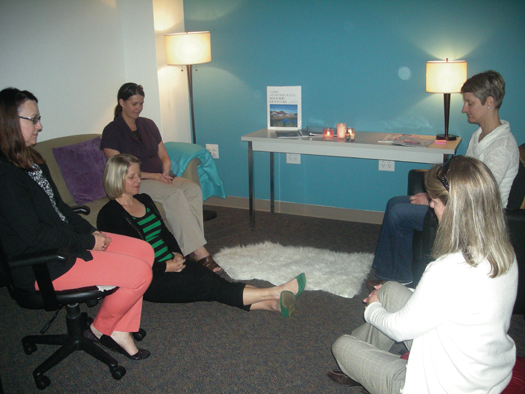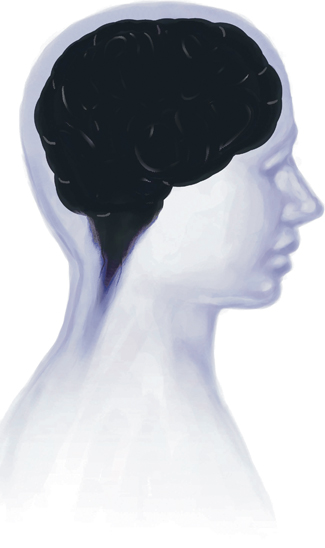 Four years ago, a valued long-time staff member walked into Dr. Ginny Sprang’s office and announced suddenly that she was quitting. The staff member said her job, which involved reviewing and summarizing child abuse and neglect case files, was ruining her life. She was having nightmares, was overly anxious about her own children’s safety and couldn’t stop thinking about the horrific events in the case files she read each day. Dr. Sprang, the executive director of the Center on Trauma and Children and a professor in the psychiatry department at the University of Kentucky, felt terrible she had not recognized the impact secondary exposure to traumatic events was having on her staff.
Four years ago, a valued long-time staff member walked into Dr. Ginny Sprang’s office and announced suddenly that she was quitting. The staff member said her job, which involved reviewing and summarizing child abuse and neglect case files, was ruining her life. She was having nightmares, was overly anxious about her own children’s safety and couldn’t stop thinking about the horrific events in the case files she read each day. Dr. Sprang, the executive director of the Center on Trauma and Children and a professor in the psychiatry department at the University of Kentucky, felt terrible she had not recognized the impact secondary exposure to traumatic events was having on her staff.
More that 60 percent of kids were exposed to violence, close to one-half were assaulted, and 25 percent witnessed an act of violence, according to “the most comprehensive nationwide survey of the incidence and prevalence of children’s exposure to violence to date,” the 2008 National Survey of Children’s Exposure to Violence, sponsored by the federal Office of Juvenile Justice and Delinquency Prevention.
Victimization is even more common among young people in the child welfare and juvenile justice systems, leading to higher rates of traumatic stress. Adolescents involved with the juvenile justice system may be four to eight times more likely than other youth to meet diagnostic criteria for PTSD, according to research summarized in the Journal of Child and Adolescent Trauma in 2008.
For the professionals who work with them, young people’s traumatic experiences can translate to secondary traumatic stress — sometimes called compassion fatigue. One of the early researchers in this field, Dr. Charles Figley, defined secondary traumatic stress as “stress resulting from helping or wanting to help a traumatized or suffering person.”
A 2011 study of teachers and staff in a juvenile justice facility published in the Journal of Correctional Health Care found that more than half of the 118 individuals surveyed met two or more criteria for posttraumatic stress disorder. In Colorado, about half of 363 child welfare workers studied had “high” or “very high” levels of secondary traumatic stress, according to a 2006 article published in the journal Child Maltreatment.
Secondary trauma symptoms
A caseworker who repeatedly tells her colleagues the details of a client’s violent encounter or a victim advocate who refuses to listen to a friend share her own experience of being assaulted may be experiencing unresolved secondary traumatic stress. “The [symptoms of secondary trauma] you see in staff mirror [the] things you see in traumatized individuals,” said Dr. Joseph Benamati, senior faculty at the Sanctuary Institute at Andrus Children’s Center in Yonkers, N.Y.

Signs of secondary trauma could include nightmares, flashbacks, or an inability to stop thinking about, talking about or re-living traumatic events. Workers experiencing secondary traumatic stress may also try to avoid certain aspects of their work, frequently calling in sick, distancing themselves instead of engaging with clients, and avoiding places or activities that used to interest them. They may become easily startled or get angry or frightened by events outside of work that they connect to the experiences their clients have had.
Being a newer or less experienced worker, being female, being younger, or lacking organizational support are also all predictors of risk, said Dr. Sprang. Mental health research generally shows that women have higher levels of depression, post-traumatic stress disorder and psychiatric disorders. This may be because women are more likely to seek help and be honest about their symptoms, explained Dr. Sprang, so it is possible that men are experiencing symptoms at the same rates, but not reporting it.
A personal history of trauma can also make it much more difficult to avoid secondary traumatic stress. Dr. Benamati’s Sanctuary Model training includes screening existing staff for past adverse experiences. The results are then aggregated and shared. “The percentage of staff working with traumatized people who have their own trauma history is astounding,” he said. “If staff have had similar experiences and it’s not well managed, it affects the organization.”
Benamati added that workers are used to thinking of themselves as helpers, rather than as “injured,” but people working with traumatized clients need to be aware of their own vulnerabilities. Otherwise, they may re-enact their own traumatic experiences, standing in the way of clients’ recovery.
Dr. Sprang recommends that a discussion of secondary trauma be part of every orientation for professionals working with young people, especially traumatized youth. Staff need to understand this is normal, she explained. They should be taught to recognize signs of secondary trauma, the importance of seeking help, and how to access support. Workers who were not given this information initially should receive it as well. When a supervisor recognizes that a specific staff member has past trauma that may be affecting current work, he or she should try to adjust the types of cases the worker has and help the staff member stay aware of the work’s impact. Talking about whether formal services are needed and engaging in reflective supervision (see sidebar) can also be important.
Effects on youth
Secondary trauma leads to turnover and attrition, and can cause staff to withdraw from their work or avoid difficult cases or tasks. This harms young people who depend on professionals to be emotionally present for them, and may lead to longer waits for services. There’s a scarcity of resources to begin with, said Dr. Sprang, so if a child or adolescent finally gets to the right place, with a person who has the skills and training to help, you’re adding another barrier if the professional can’t tolerate the work long enough to help. It can be very difficult for young people to open up, added Dr. Sprang, and the relationships they create are fragile, so having to start over with a new clinician may lead to a child or adolescent dropping out of therapy or taking longer to complete treatment.
Helping the helpers
Today, Dr. Sprang co-chairs the National Child Traumatic Stress Network’s committee on secondary traumatic stress, and her office uses several strategies to help employees deal with trauma and stress in healthy ways. Dr. Sprang says it’s important to integrate self-care practices in day-to-day organizational work. (See Sidebar.)
In her Center, everyone has an accountability buddy — someone with whom they can talk about what upsets them about the work. Buddies decide when and how often to meet, and develop their own strategies and activities for coping and staying balanced. Some get pedometers and share their progress with each other or set goals to leave the office on time. They also check in on each other to make sure self-care plans and strategies are being utilized. The staff have also had group sessions on guided meditation and other mindfulness techniques.
Dr. Sprang also limits her staff’s exposure to trauma by ensuring staff members have mixed caseloads, so that someone who evaluates severe child abuse cases also has treatment clients. She does not assign less-experienced staff and students to the most disturbing cases. Dr. Sprang said managers “need to assume that repeated exposure (even secondhand) to trauma is going to affect staff, even if you are not seeing signs of it.”
Dr. Sprang sees a difference in her office now. There’s an open dialogue, she said. People are talking about the impact of the work on them and the need to do something. The conversation is ongoing, but there’s no stigma attached, she explained. It’s not just supervisors looking out for their subordinates or Dr. Sprang trying to “take care of” her entire staff. Everyone recognizes that they have a responsibility to take care of themselves and each other — and that is a great outcome, said Dr. Sprang.
Photo credits: TOP: Courtesy of University of Kansas Center on Trauma and Children; BOTTOM: Illustration by Charles Waltmire / MCT
Lisa Pilnik, JD, MS, is co-founder of Child & Family Policy Associates, a Maryland-based consulting firm, and has written for Redbook, Reader’s Digest and ABA Child Law Practice.































